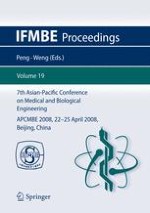2008 | OriginalPaper | Buchkapitel
Computational Simulation for Osteoporosis at the Basic Multicellular Unit Level
verfasst von : H. Gong, Y. B. Fan, Ming Zhang
Erschienen in: 7th Asian-Pacific Conference on Medical and Biological Engineering
Verlag: Springer Berlin Heidelberg
Aktivieren Sie unsere intelligente Suche, um passende Fachinhalte oder Patente zu finden.
Wählen Sie Textabschnitte aus um mit Künstlicher Intelligenz passenden Patente zu finden. powered by
Markieren Sie Textabschnitte, um KI-gestützt weitere passende Inhalte zu finden. powered by
In this study, we built computational simulation models of osteoporosis for both cortical bone and trabecular bone at the basic multicellular unit (BMU) level according to bone functional adaptation and Frost’s mechanostat theory. For cortical bone, cortical thickness was taken as controlling variable, and for trabecular bone, porosity was. The coupling relationship between mechanical factor and biological factor was fulfilled by osteoblastic formation threshold and BMU activation threshold. For cortical bone remodeling model, the analysis was performed on a representative rectangular slice of the cross section of cortical bone volume. The pQCT data of femur and tibia by Eser et al. [1] were used as an example of mechanical disuse to validate the model. For trabecular bone remodeling model, the analysis was done on a representative cross section of 100 mm2 of trabecular bone in the lumbar spine of a postmenopausal woman. The clinical data by Recker et al. [2] were used for the comparison of our simulation outcomes with clinical data. Results: For the femur cortical model, the simulated steady state value of cortical thickness was 2.04mm and the clinical data was 2.17mm with relative difference of 5.99%. For the tibia cortical model, the simulated steady state value was 4.13mm and the clinical data was 3.94mm with relative difference of 4.82%. Trabecular bone: When disuse was maintained, a number of different magnitudes of changes in osteoblastic formation threshold and/or changes in BMU activation threshold could give results that were consistent with the bone loss patterns seen at menopause. The computational models for osteoporosis occurred at cortical and trabecular bone developed in this study can be further used to quantify and predict the effects of mechanical and biological factors on cortical thickness and trabecular architecture, and help us to better understand the relationship between bone morphology and mechanical and biological environment.
